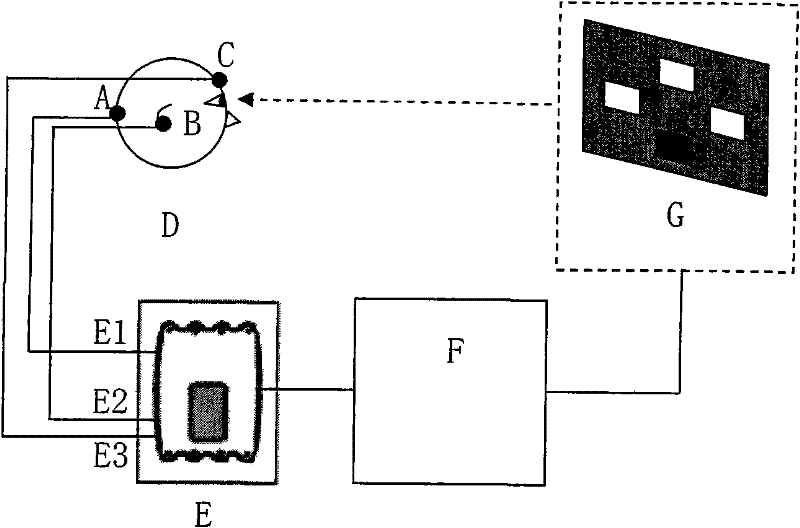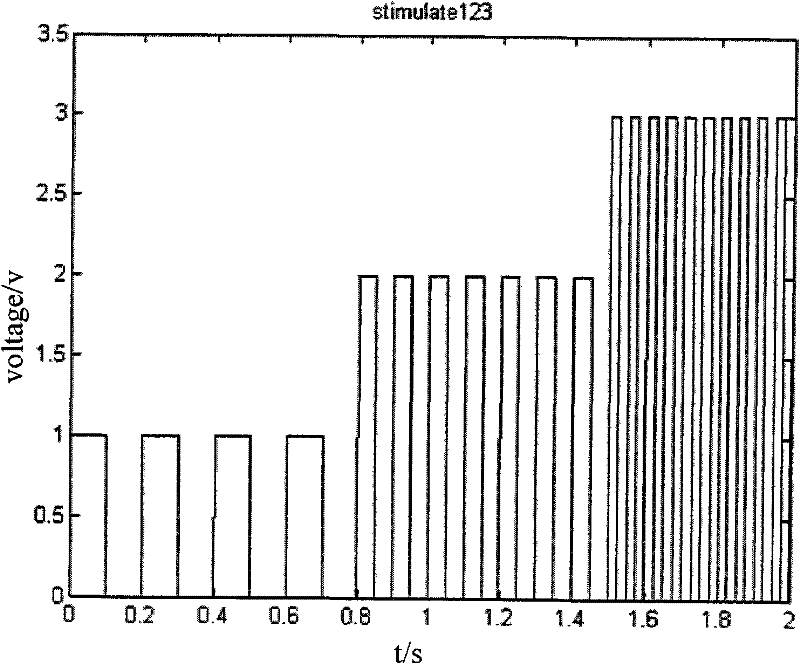HHT-based high-frequency combined coding steady state visual evoked potential brain-computer interface method
A steady-state visual induction and encoding technology, applied in the field of brain-computer interface, can solve problems such as inability to guarantee system comfort, limited number of task targets, visual fatigue, etc., increase the number of presentable targets, ensure efficient and non-destructive functions, and improve The effect of comfort
- Summary
- Abstract
- Description
- Claims
- Application Information
AI Technical Summary
Problems solved by technology
Method used
Image
Examples
Embodiment Construction
[0046] The present invention will be further described in detail below in conjunction with the accompanying drawings.
[0047] The steady-state visual evoked potential brain-computer interface method based on HHT high-frequency combination coding includes the following steps:
[0048] The first step, refer to figure 1 , place the measurement electrode A at the position Oz of the occipital region of the subject's head D, place the reference electrode B at the position of the earlobe on one side of the subject's head D, and place the ground electrode at the position Fpz of the forehead of the subject's head D C, the output terminal of the measuring electrode A is connected to the first input terminal E1 of the EEG amplifier E, the output terminal of the reference electrode B is connected to the second input terminal E2 of the EEG amplifier E, and the output terminal of the ground electrode C is connected to the EEG The third input terminal E3 of the amplifier E, the output term...
PUM
 Login to View More
Login to View More Abstract
Description
Claims
Application Information
 Login to View More
Login to View More - R&D
- Intellectual Property
- Life Sciences
- Materials
- Tech Scout
- Unparalleled Data Quality
- Higher Quality Content
- 60% Fewer Hallucinations
Browse by: Latest US Patents, China's latest patents, Technical Efficacy Thesaurus, Application Domain, Technology Topic, Popular Technical Reports.
© 2025 PatSnap. All rights reserved.Legal|Privacy policy|Modern Slavery Act Transparency Statement|Sitemap|About US| Contact US: help@patsnap.com



